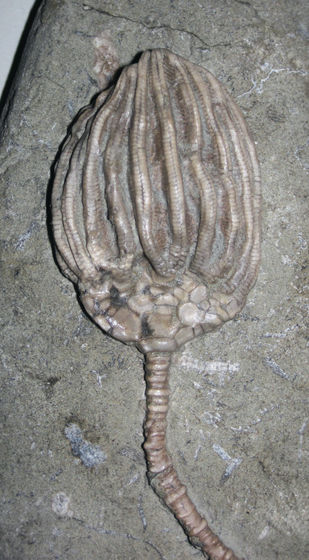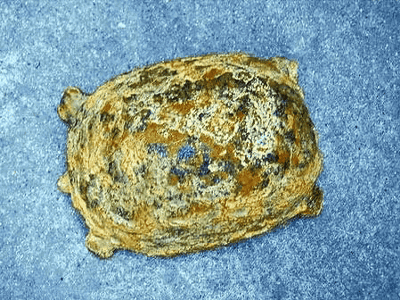Fossil of animal vomit from 66 million years ago discovered, experts say 'extremely rare and valuable'

A fossilized animal vomit from 66 million years ago was discovered at the World Heritage Site ' Steuns Klint ' on the island of Zealand in Denmark. Such discoveries are said to provide important insight into which creatures were eaten by whom.
Usædvanligt fund af danekræ på Stevns Klint - Østsjællands Museum
https://www.oesm.dk/usaedvanligt-fund-af-danekrae-paa-stevns-klint/
'Unusual Find': 66-Million-Year-Old Fossilized Vomit Discovered : ScienceAlert
https://www.sciencealert.com/unusual-find-66-million-year-old-fossilized-vomit-discovered
Peter Dennicke, a local fossil hunter, was walking around Stevens Clint when he came across a strange fragment in a broken rock, which he quickly took to the local Geological Museum , Geomuseum Faxe.
After investigation by John Jagdt, an expert at the Faxe Geological Museum, he concluded that the fossil is a 66-million-year-old 'mixture of two different species of sea lilies ' and that it is 'the fossil of an animal that ate a sea lily and then vomited up the indigestible parts of the sea lily.'

The fossil was subsequently recognized by the Natural History Museum of Denmark as a '
Jesper Milan, curator at the Faxe Geological Museum, said: 'We've found a truly unusual fossil. Sea lilies are organisms made up mainly of calcareous plates held together by some soft tissue, so eating them would not have provided any particular nutrition. However, we now know that in the Cretaceous period 66 million years ago, there was an animal that ate sea lilies that lived on the sea floor and regurgitated their skeletal parts. Discoveries like this give us important insights into predator-prey relationships and the food chain in the Cretaceous oceans.'

by James St. John
The Faxe Geological Museum plans to exhibit the vomit fossils from February 10, 2025.
Related Posts:







